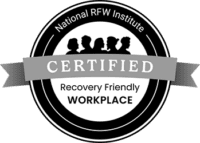Healing Through Harmony: How GoMo Music Elevates Patient Care
Music has long been recognized for its ability to evoke emotions, connect people, and serve as a therapeutic tool. In recent years, the integration of music into healthcare has gained attention, with research highlighting its benefits for both mental and physical health.1,2 GoMo Music, part of the GoMo Health digital engagement platform, leverages these advantages to create personalized engagement experiences, particularly for those managing chronic and complex health conditions, such as cancer and Alzheimer’s disease.
The Science of Healing Through Music
Research consistently shows that music can positively impact various aspects of health including reducing anxiety, alleviating pain, improving mood, and enhancing cognitive function. For example, the National Center for Complementary and Integrative Health (NCCIH) reports that music interventions reduce anxiety and depression in cancer patients, improve their quality of life, and lessen their perception of pain.3 The Cleveland Clinic further emphasizes music’s ability to enhance patients’ emotional well-being, social functioning, and motor skills.4 These findings highlight the essential role music plays in holistic healthcare, specifically for patients with cancer or Alzheimer’s disease.
According to the Alzheimer’s Association, music has a unique ability to reach individuals in the middle to late stages of Alzheimer’s disease, offering a meaningful way to connect when verbal communication becomes challenging. Studies show that music can reduce agitation and improve behavioral symptoms, making it a valuable tool in Alzheimer’s care. Even when words are forgotten, rhythm and melodies from earlier life can still resonate.5
GoMo Music: A Personalized Approach to Healing
Grounded in this scientific research, GoMo Music integrates music into a broader health engagement platform, offering personalized experiences that align with each patient’s unique preferences and health needs. The platform offers emotional and psychological support during critical moments of a patient’s health journey. It provides curated playlists based on therapeutic sound frequencies, such as 432 Hz, which generates intervals and tones with harmonious effects on the human body and mind to enhance health outcomes. Accessible via any web-enabled device, GoMo Music allows patients to use music as a tool for comfort and strength.
Music and The Brain
The benefits of music extend beyond immediate stress relief. When music enters the brain, it triggers the release of dopamine, a neurotransmitter associated with happiness and can positively alter brain function and structure. Humans are rhythmic beings, from our breath to our brain waves to the thumping of our hearts. The rhythmic nature of humans plays a crucial role in how the brain processes sound. This physiological and emotional response to music is key to its therapeutic potential.
From Stress Reduction to Emotional Resilience
Regular engagement with music fosters long-term emotional resilience, a critical factor in managing chronic conditions. Studies show that music can evoke positive memories, helping patients develop effective coping mechanisms. The World Economic Forum notes how music engages patients in a therapeutic process that builds emotional resilience over time.2 This increased emotional strength can support patients as they navigate health challenges and respond to stressors more effectively. In addition to personal healing, music can play a significant role in resolving conflicts by fostering:
- Empathy and emotional connection, encouraging individuals to understand and value others’ perspectives
- Emotional regulation, allowing individuals to manage stress and approach conflicts calmly
- Strong communication skills, including active listening and non-verbal expression
- Cooperation and teamwork, skills that are essential for collaborative conflict resolution
By fostering these emotional and interpersonal skills, music not only helps resolve existing conflicts but also equips individuals with the tools to handle future conflicts in a more constructive and empathetic manner.3,5
Neuroscientific research supports the theory that playing or listening to music can synchronize brain waves among individuals, enhancing feelings of connection and mutual understanding. This concept, noted by Daniel J. Levitin in a recent Washington Post article, reinforces the role music can play in both personal and interpersonal healing.6
The Broader Impact of GoMo Music
The integration of music into healthcare signals a shift towards holistic, personalized care. By addressing emotional and behavioral needs, GoMo Music helps reduce the stress associated with chronic conditions and contributes to improved long-term health outcomes. As healthcare evolves, solutions like GoMo Music will become increasingly important in delivering compassionate, comprehensive care. Learn more about GoMo Music and how to integrate the healing sounds of music into the patient health experience now.
References:
- Positive Psychology. “What Are the Benefits of Music Therapy?” Positive Psychology, 2023. https://positivepsychology.com.
- World Economic Forum. “How Music Therapy Can Boost Your Mental and Physical Health.” WEF, 2023. https://www.weforum.org.
- National Center for Complementary and Integrative Health. “Music and Health: What You Need to Know.” NCCIH, 2023. https://www.nccih.nih.gov.
- Cleveland Clinic. “Music Therapy: Types & Benefits.” Cleveland Clinic, 2023. https://my.clevelandclinic.org.
- Alzheimer’s Association. “Music and Art.” Alzheimer’s Association, www.alz.org/help-support/caregiving/daily-care/art-music. Accessed 1 Oct. 2024.
- Levitin, Daniel J. “A Playlist for Peace Talks.” The Washington Post, August 25, 2024.







Find Us Online